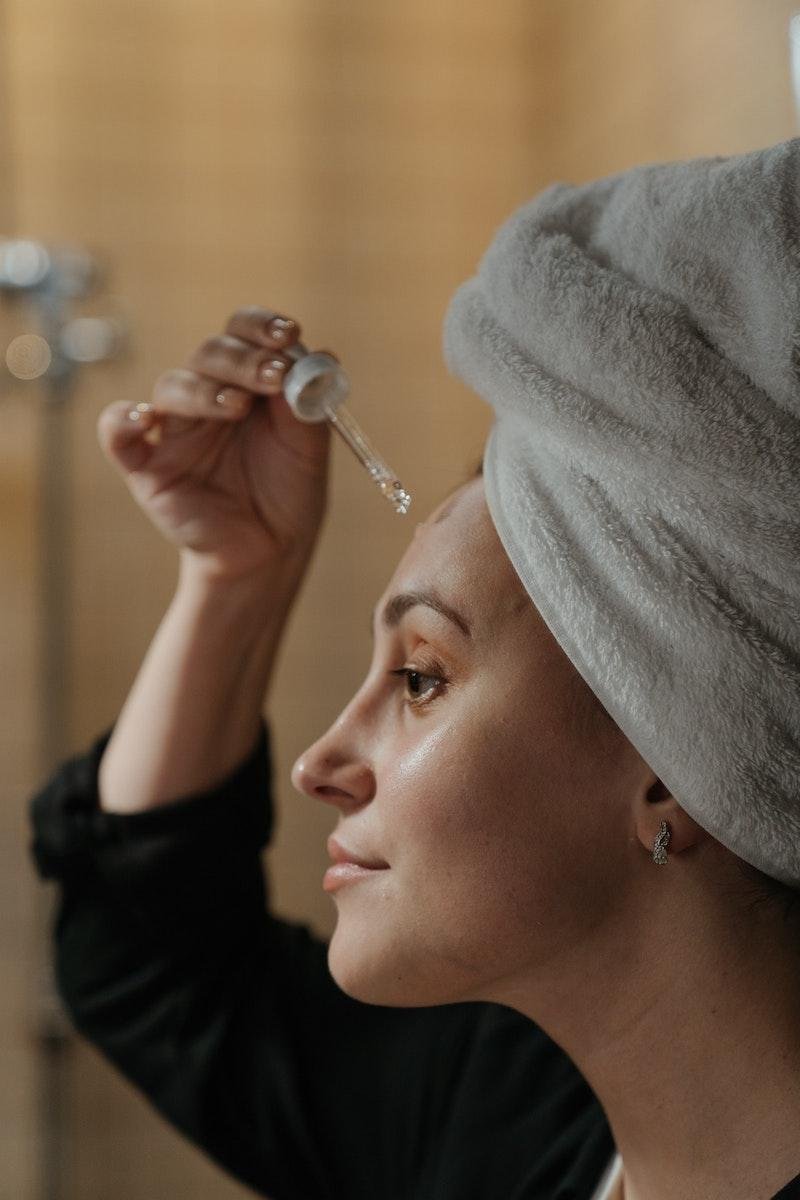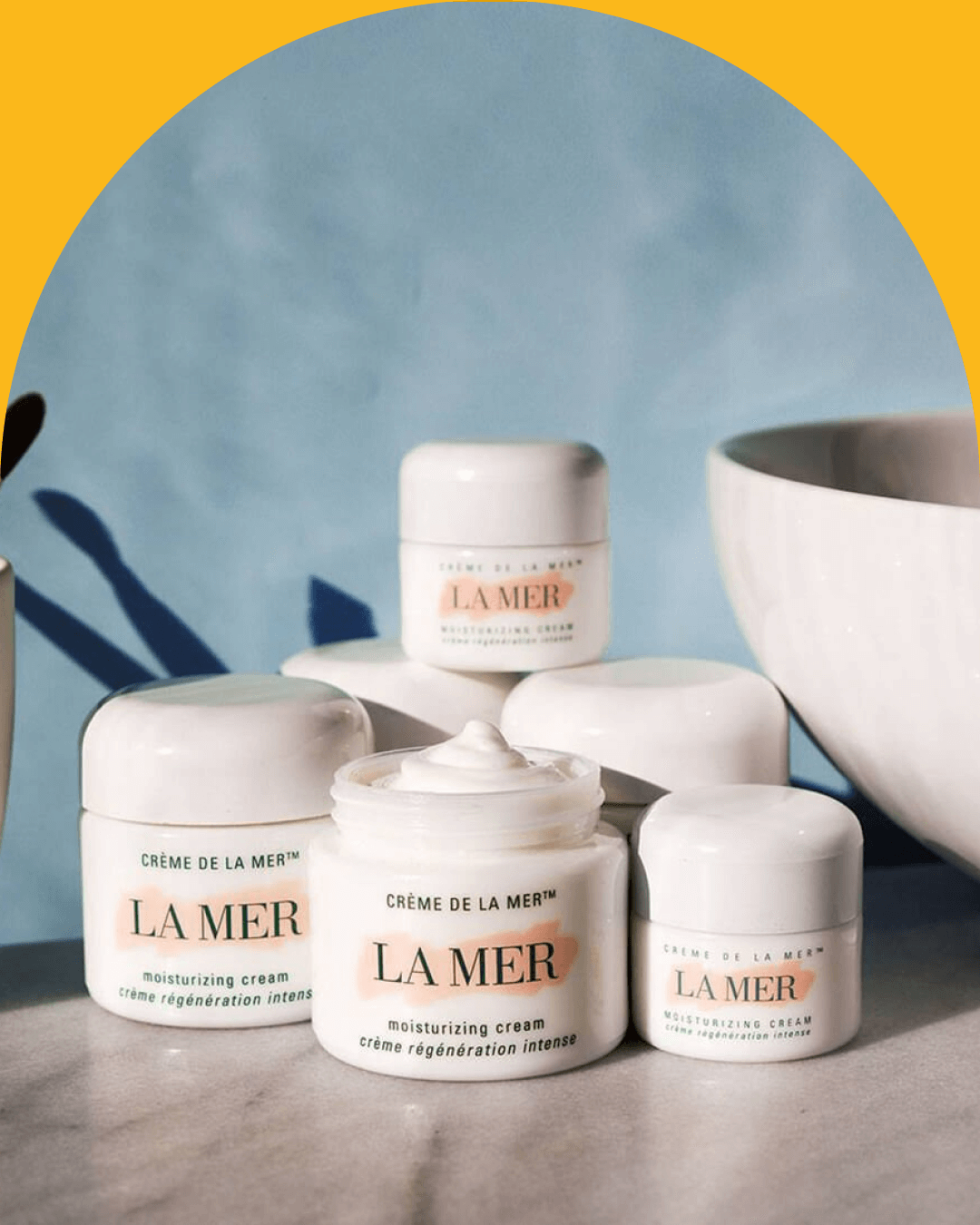Chemical exfoliation has become a cornerstone in modern skincare routines, as a powerful and effective method to achieve smoother, brighter, and more radiant skin. Unlike physical exfoliation, chemical exfoliation utilizes acids to gently dissolve and remove dead skin cells, revealing a fresh and rejuvenated complexion. Whether you’re looking to improve skin texture, reduce the appearance of fine lines and wrinkles, address hyperpigmentation, or combat acne, chemical exfoliation provides a versatile and customizable solution. Below, we delve into the world of chemical exfoliation, exploring its benefits, different types of exfoliants, and how to incorporate them into your skincare routine.
What is Chemical Exfoliation?
Chemical exfoliation involves the use of chemical substances to gently remove dead skin cells and impurities from the skin’s surface. Unlike physical exfoliation, which relies on manual scrubbing or abrasive particles, chemical exfoliation utilizes acids or enzymes to dissolve the bonds between dead skin cells, allowing them to be easily shed.
Chemical exfoliation is beneficial for addressing various skin concerns, including:
- Uneven skin tone and hyperpigmentation
- Fine lines and wrinkles
- Acne and blemishes
- Dull and lackluster skin
- Rough or textured skin
- Congested or clogged pores
Chemical Exfoliation vs Physical Exfoliation
Generally speaking, chemical exfoliants are considered superior to physical or abrasive exfoliants such as scrubs or brushes.
Gentler and Less Irritating: Chemical exfoliants are generally gentler on the skin, making them less likely to cause irritation, damage, or micro-cuts. Unlike physical exfoliants that involve manual scrubbing, chemical exfoliation works by dissolving the bonds between dead skin cells, for a more gentle and controlled process.
Versatility: Chemical exfoliants come in various forms and strengths, allowing for customization based on individual skin types and concerns. They can be tailored to address specific issues, such as fine lines, hyperpigmentation, acne, or dullness.
Precision: Chemical exfoliation offers more precise and targeted exfoliation compared to physical methods. It can effectively remove dead skin cells without causing unnecessary irritation or damage to the skin.
Effectiveness: Chemical exfoliation can penetrate deeper into the skin compared to physical exfoliation. This enables them to deliver more comprehensive results, improving skin texture, promoting cell turnover, and addressing a range of skin concerns.
Different Types of Chemical Exfoliants
There are three categories of chemical exfoliants, each with slightly different properties.
The three most common types of chemical exfoliants are:
AHAs: Alpha Hydroxy Acids are chemical exfoliants usually derived from fruits or milk that help to remove dead skin cells, improve skin texture, and promote a more even and radiant complexion.
BHAs: Beta Hydroxy Acids are oil-soluble chemical exfoliants, such as salicylic acid, that penetrate deep into the pores, effectively exfoliating dead skin cells, controlling oil production, and treating acne and blemishes.
PHAs: Polyhydroxy Acids are a type of chemical exfoliant that provide gentle yet effective exfoliation, hydration, and antioxidant benefits to the skin, making them suitable for sensitive skin types.
Each category of chemical exfoliant contains several different kinds. Below, we go into more detail about types of AHAs, BHAs, PHAs, and professional-grade chemical exfoliants.
Alpha Hydroxy Acids – AHAs
AHAs, or Alpha Hydroxy Acids, are water-soluble acids derived from fruits, milk, or sugar cane that gently exfoliate the skin by breaking down bonds between dead cells, revealing smoother, brighter skin. They improve texture, reduce wrinkles, promote even tone, enhance moisture retention, and fade dark spots and acne scars.
Common AHAs include:
Glycolic Acid: Derived from sugarcane, glycolic acid is one of the most common and potent AHAs. It effectively exfoliates the skin, improves texture, and reduces the appearance of fine lines and wrinkles.
Lactic Acid: Found naturally in milk and fruits, lactic acid is a gentle AHA suitable for sensitive skin. It helps to improve skin tone, hydrate the skin, and reduce the appearance of dark spots.
Mandelic Acid: Derived from almonds, mandelic acid has larger molecular size, making it a milder AHA. It is suitable for sensitive skin and helps with exfoliation, improving skin texture, and reducing hyperpigmentation.
Citric Acid: Naturally present in citrus fruits, citric acid provides exfoliation, brightening effects, and can help reduce the appearance of dark spots. It also offers antioxidant benefits.
Malic Acid: Found in apples and pears, malic acid is another gentle AHA. It helps to smooth the skin’s texture, enhance radiance, and improve the appearance of fine lines and wrinkles.
Tartaric Acid: Derived from grapes, tartaric acid offers exfoliation and helps to improve the overall appearance of the skin. It can also assist in reducing the signs of aging.
Pyruvic Acid: This AHA is derived from honey and vinegar. Pyruvic acid provides exfoliating properties, improves the appearance of acne-prone skin, and helps reduce the appearance of scars.
Beta Hydroxy Acids – BHAs
BHAs, or Beta Hydroxy Acids, are a type of oil-soluble chemical exfoliant that have the ability to penetrate deep into the pores, making them particularly effective for treating acne, blackheads, and clogged pores. BHAs also have anti-inflammatory properties, helping to reduce redness and inflammation associated with acne.
Common BHAs include:
Salicylic Acid: Salicylic acid is the most widely known and used BHA. It is highly effective in treating acne and blemishes by penetrating the pores and reducing oiliness. It also helps to exfoliate dead skin cells, unclog pores, and improve skin texture.
Betaine Salicylate: This BHA is derived from sugar beets and has similar properties to salicylic acid. Betaine salicylate is often found in milder formulations, making it suitable for sensitive skin types.
Tropic Acid: Tropic acid is a BHA derived from the bark of the African whitewood tree. It possesses anti-inflammatory properties and helps to exfoliate the skin, making it beneficial for acne-prone and oily skin.
Salix Alba (Willow) Bark Extract: Willow bark extract is a natural source of salicylic acid. It provides exfoliation, helps control excess oil, and reduces the appearance of pores. It is commonly used in natural skincare products.
Polyhydroxy Acids – PHAs
PHAs, or Polyhydroxy Acids, are similar to AHAs and BHAs but have larger molecular structures, resulting in slower and gentler exfoliation. They attract and retain moisture, making them ideal for dry or sensitive skin. With antioxidant properties, PHAs protect against environmental damage. They are less likely to irritate sensitive skin and are safer for sun-exposed areas than AHAs and BHAs.
Common PHAs include:
Gluconolactone: Gluconolactone is a widely used PHA that offers gentle exfoliation and helps improve skin texture. It has antioxidant properties, promotes hydration, and can enhance the skin’s barrier function. It is suitable for sensitive skin types.
Lactobionic Acid: Lactobionic acid is a larger molecule PHA that provides gentle exfoliation and antioxidant benefits. It helps improve skin tone and texture, reduces the appearance of fine lines and wrinkles, and promotes a more radiant complexion.
Galactose: Galactose is a naturally occurring sugar that functions as a gentle exfoliant. It helps to improve skin texture and tone while offering hydration benefits. It is suitable for sensitive and dry skin types.
Maltobionic Acid: Maltobionic acid is a larger molecule PHA that provides gentle exfoliation and antioxidant properties. It helps to reduce the signs of aging, improve skin texture, and promote a more even complexion.
Gluconic Acid: Gluconic acid is a mild PHA that offers gentle exfoliation and antioxidant benefits. It helps to improve skin texture and tone, enhance hydration, and promote a healthy-looking complexion.
TCAs & Phenol Peels
Trichloroacetic Acid (TCA) and Phenol peels are professional chemical treatments known for their remarkable ability to rejuvenate the skin.
TCA peels offer customizable middle-layer exfoliation, addressing concerns like fine lines, uneven tone, and mild scarring. Phenol peels, on the other hand, provide deep skin rejuvenation, targeting severe wrinkles and sun damage. While TCA peels offer versatility and milder effects, Phenol peels yield dramatic results with collagen stimulation. Both procedures require professional guidance and careful consideration based on individual needs and recovery time.
Chemical Exfoliation by Skin Type
With so many different types of chemical exfoliants on the market, choosing the right one for your skin type can make all the difference. Certain exfoliating acids are better suited for certain skin types, conditions, or concerns.
Chemical Exfoliation for Dry Skin
Lactic Acid: Lactic acid offers gentle exfoliation, improves skin texture, and enhances hydration. It helps to reveal smoother, more radiant skin without causing excessive dryness.
Mandelic Acid: Mandelic acid provides exfoliation suitable for sensitive and dry skin. It helps to improve skin texture, promote cell turnover, and reduce hyperpigmentation without causing irritation.
Chemical Exfoliation for Oily & Acne-Prone Skin
Salicylic Acid: Salicylic acid is highly effective in penetrating pores, reducing oiliness, and exfoliating dead skin cells. It helps to control acne, unclog pores, and improve overall skin texture.
Glycolic Acid: Glycolic acid offers exfoliation, helps to reduce the appearance of acne scars, and improves skin tone. It promotes a smoother complexion and can address both acne and textural concerns.
Chemical Exfoliation for Sensitive Skin
Mandelic Acid: Mandelic acid, with its larger molecular size, provides gentle exfoliation suitable for sensitive skin. It helps to improve skin texture, reduce redness, and minimize the risk of irritation.
PHAs (Polyhydroxy Acids): PHAs offer gentle exfoliation and are well-tolerated by sensitive skin. They provide hydration, antioxidant benefits, and help improve skin texture without causing irritation.
Incorporating Chemical Exfoliants in Your Routine
Incorporating chemical exfoliation into your skincare routine is essential for achieving smooth, radiant skin. Here’s a simplified guide on how to incorporate chemical exfoliation:
Cleanse: Start by cleansing your face with a gentle cleanser suitable for your skin type. This removes dirt, oil, and makeup, preparing your skin for exfoliation.
Exfoliate: Apply a small amount of the chemical exfoliant to your skin, avoiding the eye area. Follow the product or professional instructions carefully. You can use a cleanser with chemical exfoliants, an exfoliating toner, or a serum.
Continue: After exfoliating, proceed with the rest of your skincare routine using gentle, non-irritating products. Avoid using potent ingredients like vitamin C or retinol immediately after exfoliation, as they can cause sensitivity.
Sun protection: Finish your routine by applying a broad-spectrum sunscreen to protect your skin from harmful UV rays. Chemical exfoliation increases sun sensitivity, so daily sun protection is crucial.
It’s best to exfoliate at night to allow your skin to recover and reduce sensitivity during the day. Remember to adjust the frequency of exfoliation based on your skin’s response and consult with a skincare professional for personalized advice.
Ingredients to Avoid With Chemical Exfoliants
When using chemical exfoliants, it is important to avoid certain skincare ingredients and treatments. Consider using these other skincare ingredients and treatments on different days, to give your skin a chance to heal following exfoliation.
Ingredients to be careful of when using chemical exfoliants include:
Other exfoliants: Refrain from using additional exfoliating products, such as scrubs, brushes or additional exfoliating acids, immediately after chemical exfoliation.
Benzoyl Peroxide: Benzoyl peroxide, a common ingredient in acne treatments, immediately after chemical exfoliation can cause increased sensitivity and potential skin irritation.
Vitamin C & other antioxidants: Strong antioxidants, including vitamin C, may interact with the exfoliated skin and potentially cause irritation or reduced efficacy.
Strong retinols & tretinoin: Steer clear of strong retinol products in the immediate post-exfoliation period. The combination of these potent ingredients with freshly exfoliated skin can lead to excessive dryness, redness, and irritation.
Additionally, it’s advisable to avoid waxing, threading, or using depilatory creams immediately before or after chemical exfoliation. These hair removal methods can make the skin more sensitive and combining them with exfoliation may increase the risk of irritation.
At-Home vs Clinical Chemical Exfoliation
Chemical exfoliation can be done in the comfort of your own home, with many products that contain AHAs and BHAs on the market. These can be in the form of cleansers, toners, serums, or other treatments.
However, for more intense, longer lasting, results, in-clinic chemical peels are also an option. These involve stronger acids, like polyhydroxy acids or phenol peels, or higher concentrations of AHAs and BHAs and need to be performed by trained professionals.
At-Home Chemical Exfoliation
At-home chemical treatments refer to the use of over-the-counter products containing chemical exfoliants. These products often contain lower concentrations of active ingredients compared to clinical treatments but can still provide noticeable results. Common at-home chemical exfoliants include cleansers, toners, serums, masks, and peel pads.
At-home chemical treatments offer convenience and affordability, allowing individuals to incorporate exfoliation into their regular skincare routine. They can help improve skin texture, diminish fine lines, even out skin tone, and address mild skin concerns. However, the efficacy may vary based on the concentration of active ingredients and the duration and frequency of use. Severe skin conditions or more significant concerns may require the expertise of a dermatologist and clinical treatments.
Before trying at-home chemical treatments, it’s important to consider several factors. These include your skin type, sensitivity, specific concerns, and the instructions provided by the product. Additionally, conducting a patch test prior to using a new product can help assess your skin’s reaction and tolerance.
In-Clinic Chemical Peels
Clinical chemical peels are performed by dermatologists or trained skincare professionals in a clinical setting. These treatments often involve higher concentrations or stronger types of chemical acids and can provide more dramatic and targeted results.
Clinical chemical peels offer several benefits, including more significant improvements in skin texture, tone, and the ability to target specific concerns like deep wrinkles or severe acne. They are performed under professional supervision, ensuring proper application and monitoring. However, chemical peels may involve downtime, potential side effects, and a higher cost compared to at-home treatments. It’s essential to follow post-treatment instructions carefully and attend follow-up appointments as advised.





